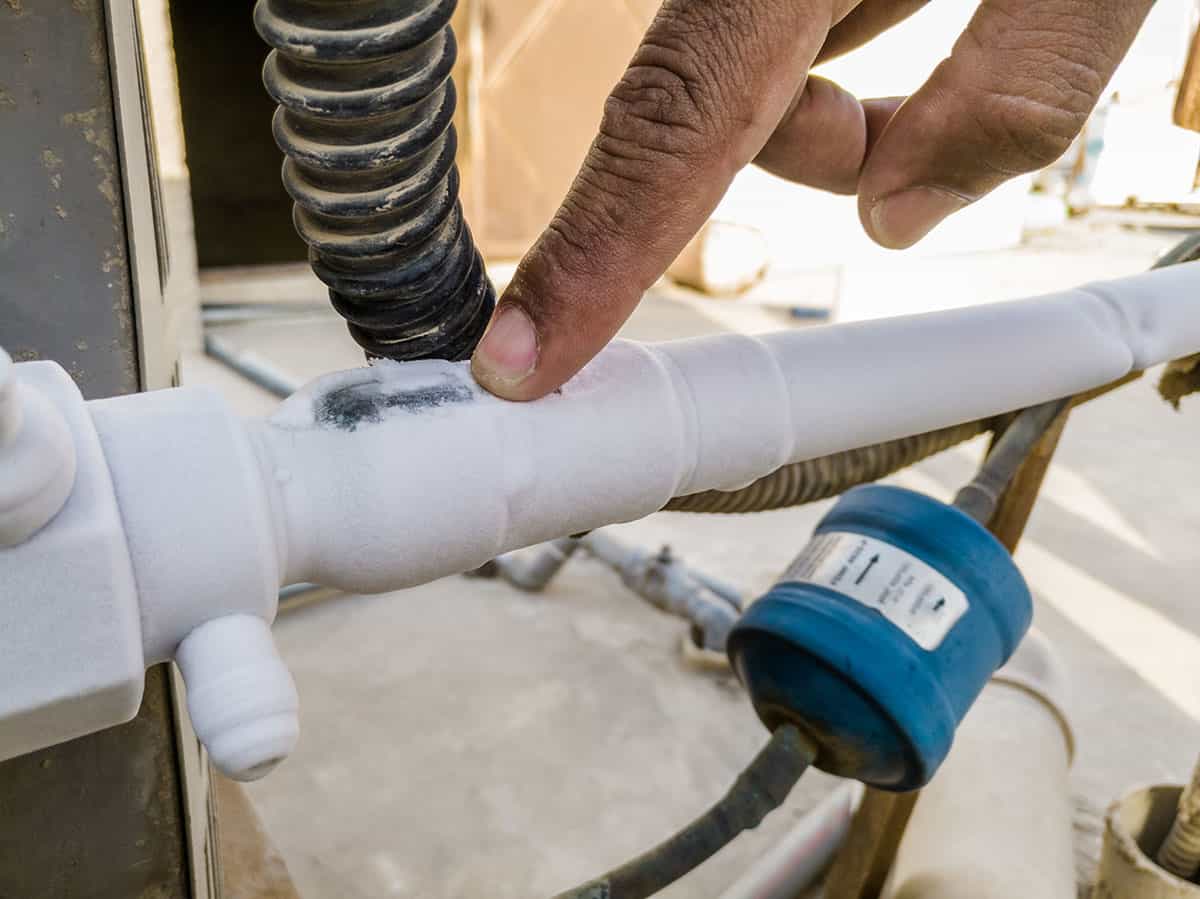We've found this great article relating to Have a Frozen AC Line? Here’s How to Fix It down the page on the web and felt it made good sense to talk about it with you on this page.

Intro
Discovering that your AC pipe is frozen can be concerning, especially during hot summer season when you depend on your ac system the most. Recognizing what to do in such a circumstance is vital to avoid additional damage to your cooling system and guarantee your convenience inside your home.
Comprehending the Causes
Several variables can add to the freezing of an AC pipeline. Comprehending these reasons can assist you address the concern successfully.
Lack of Airflow
One usual reason for an icy air conditioner pipe is inadequate air movement. When the air flow over the evaporator coil is restricted, it can trigger the coil to go down below freezing temperature, bring about ice formation on the pipeline.
Reduced Refrigerant Levels
Insufficient cooling agent degrees in your a/c system can additionally result in an icy pipeline. Reduced refrigerant levels can create the stress in the system to drop, resulting in the freezing of moisture on the evaporator coil.
Winter Conditions
In chillier environments, freezing temperature levels outside can contribute to the freezing of air conditioning pipes. If your a/c system is not appropriately shielded or if there are leaks in the ductwork, cold air can infiltrate the system, causing the pipe to freeze.
Dirty Air Filters
Dirty or clogged air filters can limit air movement in your air conditioner system, bring about different concerns, consisting of an icy pipe. It's necessary to replace or cleanse your air filterings system consistently to make sure appropriate airflow and avoid ice build-up.
Signs of a Frozen AC Pipe
Acknowledging the indications of a frozen AC pipeline is crucial for timely activity.
Reduced Airflow
If you see a substantial reduction in air movement from your vents, it might suggest a frozen pipeline.
Ice Buildup on the Pipe
Noticeable ice accumulation on the refrigerant line or the evaporator coil is a clear indicator of an icy a/c pipe.
Strange Sounds from the Unit
Uncommon noises, such as hissing or bubbling, originating from your a/c unit can signify that there's ice present on the pipeline.
Immediate Actions to Take
When faced with an icy a/c pipeline, it's vital to act rapidly to stop further damage to your air conditioning system.
Turning off the air conditioner
The primary step is to switch off your ac system to avoid the system from running and exacerbating the issue.
Checking for Blockages
Check the location around the interior unit for any obstructions that may be obstructing air movement, such as furnishings or drapes.
Defrosting the Pipe
You can make use of mild techniques like positioning towels taken in warm water around the icy pipeline to help thaw it gradually.
Preventive Measures
Taking preventive measures can aid prevent future events of an icy AC pipe.
When DIY Methods Fail
If your efforts to thaw the pipe or address various other problems are unsuccessful, it's time to contact a specialist.
Relevance of Hiring a Professional HVAC Technician
A qualified HVAC technician has the know-how and devices necessary to identify and repair concerns with your a/c system safely and effectively.
Routine Maintenance Checks
Schedule routine upkeep consult a specialist HVAC service technician to ensure that your a/c system is running efficiently.
Altering Air Filters
Consistently replace or clean your air filters to stop air movement restrictions and maintain ideal efficiency.
Shielding Exposed Pipes
If your AC pipes are subjected to chilly temperature levels, take into consideration insulating them to prevent cold throughout cold weather.
Looking For Professional Help
If DIY approaches fall short to settle the concern or if you're unclear concerning just how to continue, it's finest to seek support from a qualified HVAC professional.
Final thought
Dealing with an icy air conditioning pipeline can be an irritating experience, but recognizing how to react can help lessen damage and bring back comfort to your home. By recognizing the causes, identifying the signs, and taking timely activity, you can effectively deal with the concern and prevent future incidents.
G UP? HOW TO FIX IT?
It happens all over America. And the rest of the world probably. It’s the hottest day ever and for some darn reason your AC isn’t cooling the house. You fiddle with the thermostat to try and fix the problem. Nada. All you can do now is go outside and check the AC unit. You make your way there and find your air conditioner unit is frozen! But how?
In this post we’ll cover how you can tell that your air conditioner has frozen (other than the obvious reasons), what could have caused the freeze, and some of the things you can do about your AC freezing up. And if you have a frozen heat pump condenser, read our blog about it to learn what to do! But remember, it is always best to avoid your AC freezing up with an AC tune up. And if you are moving into a home, it's critical to get HVAC inspection so that you are aware of an AC problems before you move in.
Keep reading and you may be able to fix the frozen AC yourself. If you can’t, call an HVAC specialist. If you live in Maryland, call SuperTech HVAC for AC repair. We’ll take care of it.
How Does An Air Conditioning Unit Work?
How you probably imagine an AC works is wrong. Contrary to popular belief, an AC system does not inject cool air into a building. Instead, it removes the heat from inside and transfers it outside. Cool huh? (Pun intended).There are 4 major components among the 3 stations of an air conditioning system: the evaporator coil, the compressor, the condenser, and the refrigerant – a special chemical that links everything together through a closed loop system.
Station 1:
Warm indoor air is sucked into the return vent, through a filter, and blows over the evaporator coil. The heat is absorbed into the cold refrigerant, turning it from liquid to gas. The air, which is now cool, is blown back into the home to areas that your thermostat, i.e. you, has decided.
Station 2:
The refrigerant makes its way outside the house to the compressor, which squeezes the warm refrigerant, raising its gaseous temperature even more.
Station 3:
When the super hot vapor refrigerant reaches the condenser, the last step, the heat is expelled and absorbed into the outdoor air. The refrigerant instantly cools, which changes it from gas back to liquid form. The cold liquid refrigerant is now ready to return to station 1 and repeat the process.
Is Your AC Freezing Up? Here Are The Signs:
As you may have guessed, your air conditioner unit freezing up on a hot day is not normal.
If this happens, there's no need to panic. Often the issue can be solved with a little troubleshooting. If the AC unit is left frozen for too long however, you may find yourself with a bigger problem.
First things first, how do you know your AC is frozen?
Well, the obvious sign is the ice on your refrigerant line-set pipe. Simply check between your outdoor AC unit and your home's exterior wall to see whether your AC line frozen.
You might also have a frozen evaporator coil. This one's not as easy to check. You'll need to open a panel on the indoor unit to inspect. Don't do this unless you're handy. If you aren't, call an HVAC pro like SuperTech HVAC or you may damage something in the process.

Hopefully you enjoyed reading our section about How can I fix an air conditioner’s frozen pipe?. Thanks a lot for taking the time to browse our article post. Sharing is nice. Who knows, you may very well be doing someone a favor. I praise you for your time. Come back soon.
Estimate
Comments on “Ways to Deal with a Frozen AC Pipe: Professional Tips”